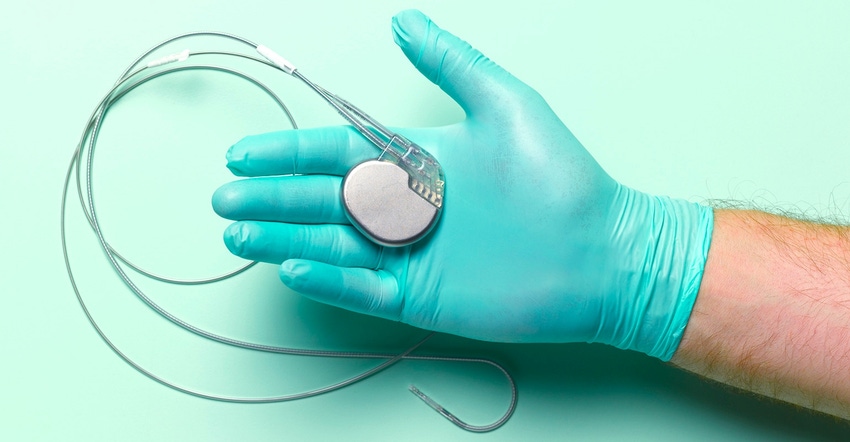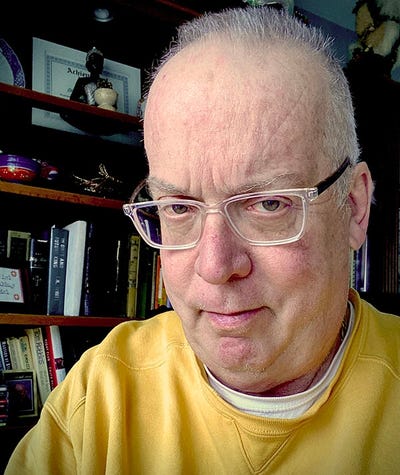Meeting the Critical Needs of the Medical Battery Market
The CTO of Swiss battery maker Wyon AG highlights the stakes, challenges, and tactics in this Medical Battery Conference preview.
December 20, 2023

The depth and breadth of medical technology applications addressing human health improvement remains staggering—from pacemakers to pain management; from cochlea implants to wearable (and implantable) glucose monitoring.
Extrapolating the related ever-changing issues that apply to the medical batteries that power such devices would cover power density in relation to size (miniaturization), design flexibility, material tradeoffs, traceability, and human safety, among many others.
This is why “Solving the Critical Needs of the Medical Battery Market,” presented by Marcel Inauen, chief technological officer of Switzerland-based battery maker Wyon AG, promises to be a compelling portion of Medical Battery Conference USA 2024 at MD&M West, February 6-8, 2024, at the Anaheim Convention Center, presented by Informa Engineering. Inauen recently shared a preview of some of his presentation highlights with Battery Technology.

Marcel Inauen, CTO, Wyon AG (Credit: Wyon AG)
What are the medical battery issues your presentation addresses—what problems need solving?
Wyon AG CTO Marcel Inauen: There is a significant trend toward miniaturization in the field of medical devices designed for on-body or in-body applications. The power source must be cleverly adapted to the dimensions of these devices, requiring seamless integration while ensuring maximum performance. Simultaneously, it is imperative to uphold the quality and reliability of the batteries.
By leveraging Wyon's extensive experience in miniaturization, coupled with innovative design approaches and cutting-edge technologies, we have successfully achieved optimal performance in the most compact spaces. This presentation aims to provide an in-depth understanding of Wyon's ability to meet customers' high expectations for technologically advanced cells and batteries.
What are the alternatives to Wyon’s solutions? What would be the advantages to Wyon’s design and performance and how would these be measured?
Inauen: Yes, there are alternatives. The question is which compromises are acceptable. For wearable applications, the existing alternatives are mainly standard coin cells or pouch cells. However, these alternatives quickly reach their limits when it comes to miniaturization in height or diameter. They are also difficult or impossible to shape into the device’s desired geometry. Pouch cells additionally have limitations in terms of performance and precise dimensions.
In the field of implantable cells, there are only a few manufacturers with relevant experience due to the very high safety and performance requirements and therefore only a few alternatives to Wyon.
Normally customers have clear requirements for the design. Therefore, they appreciate the flexibility that our technology offers. Wyon technology offers design freedom in two dimensions, and we are differentiated by our expertise in miniaturization and the associated maximized energy density per volume. Especially when cells become smaller and the ratio of available volume for active material to housing decreases. In addition, our unique plastic housing technology offers several advantages, including lower eddy current losses, corrosion resistance, reduced weight, or mounting options to reduce overall device size.

Wyon’s headquarters campus in Switzerland’s Appenzell. (Credit: Wyon AG)
Our clearly defined development process, which creates transparency, and our many years of experience in battery development are also seen as advantages and are highly valued. We are a solution provider, what our customers value.
Finally, our customers choose Wyon because we understand the diverse market and regulatory requirements for medical devices.
Our technologies offer exciting solutions for performance characteristics such as volumetric energy density, number of charge cycles, battery life, battery size and shape, development time, and cost.
Are these solutions Euro-centric or do they apply to the world market as well? Anything particularly of interest to North America?
Inauen: Our products have a global presence, with a particular emphasis on the European and North American markets. While we don't experience differences in the application of technologies, distinctions arise in the market approval processes, such as those governed by the FDA or MDR (the European Union Medical Device Regulation).
How has this Wyon approach changed through the years?
Inauen: Originally, we mainly used jellyroll technology, which also uses a plastic housing, allowing us to reduce weight and achieve a certain degree of shape flexibility. But when we started using stacking technology, we were able to take full advantage of the capabilities of a plastic housing and turn them into notable value-adds for the customer. Miniaturization has also made interesting developments in recent years, allowing us to offer even smaller batteries with high capacity.
Do you have any news on Wyon battery technology or customer wins that we can announce?
Inauen: In addition to other technology projects, we are currently investing heavily in implantable cells. We are very pleased with the progress, and the first implantable product will be released for production and launched on the market at the end of 2024/beginning of 2025.
For more information, including how to register for the Medical Batteries Conference at MD&M West, visit www.imengineeringwest.com.
About the Author(s)
You May Also Like





